How long until birds find my new suet feeders?
Esther-B, Zone 7a
last year
Featured Answer
Sort by:Oldest
Comments (8)
Esther-B, Zone 7a
last yearRelated Discussions
at last, a pic of the birds that make a mess of my feeder
Comments (21)rsangel64 - I have a bunch of squirrels around that want the seed too but at this point they are doing me a favor by eating the stuff off the ground that these finch slobs fling everywhere. If the squirrels get up on the feeder, then they will be dealt with. Soooo... maybe scatter something the squirrels can eat off the ground which will perhaps keep em off the feeders. Cindy, I too have a family of cardinals which come several times a day, pretty much at the same times too. They seem to be pretty good about sharing THEIR feeder with the finches and bluejays. The mockingbirds eat apples I put out there for em. The doves dont seem to bother anyone, they just hang out the longest. I never used to have birds out back, but thanks to all the folks showing off their backyard feathered friends I was determined to see if I could attract em too. Sooo far sooooo good. Marion, try the big K or Tarjet. I looked online at petS and their cost was double! Seeing as you are into sewing, make one and just buy seeds. That would be the BEST thing. I bet yours would be WAYYYYYYY fancy and the birds would love em....See MoreIs there a suet that won't kill my new grass?
Comments (7)Warm temperatures will melt the peanut butter. Let's see: son's enjoyment and appreciation of the birds OR a bit of dead grass? Which do you think is more important? I doubt VERY much that the peanut butter will kill the yard. But if that is a serious issue, you could put a temperary layer of mulch down around the feeder, OR hang this feeder in an area where it wouldn't particularly matter if a 5 square inch of sod was killed. ;-)...See MoreStill only observers near my suet feeder
Comments (5)Whenever I have put out a new feeder, it has taken a week or two for the birds to find it, and likewise it is usually the Chickadees that figure it out first. Such curious and intelligent little birds. The exception was the small suet cage with raw suet that I hung on the trunk of a big Oak tree last year. Then it was a Downy that found the cage almost immediately....See Morebirds not coming to suet feeder
Comments (20)I have an excellent book which someone gave me called "The Audubon Backyard Birdwatcher Birdfeeders and bird Gardens" by Robert Burton & Stephen W. Kress, published by the Audubon Society on Thunder Bay Press. (ISBN 1-57145-186-2) Not only does this book have excellent pictures of birds, it has dozens of plans on how to make bird feeders, nesting boxes, bird baths and how to plant a landscape garden to attract birds. There is one whole chapter devoted to bird feeds and what birds they will attract. In addition to the common seeds and suet mixes they have a long list of table scraps that are great for attracting birds. They suggest making a wire cage and put your meat scraps in it, especially the fats that your trim off cooked hams or beef in addition to ham bones, beef marrow bones and even teh leftover turkey bones. A few other things that i found interesting was cooked spaghetti, cooked rice, uncooked pastry dough, baked potatoes with the skin on and stale cheese. Out of curiosity I baked a potato in the microwave, then sliced it in half and put it on my shelf feeder. It was a big hit with all the birds. Another thing that the birds here seem to like is orange peels. I saw a Blue jay pick up and orange peel that was 1/4 of the orange and fly off with it. If anyone is looking for a great how to book on building bird feeders or bird houses or making their own bird feeds I would highly recommend this one, especially if you are making bird feed because I am a bit skeptical of the health concerns for the birds when i read the recommendations of some books, but I don't think the Audubon Society would steer us wrong....See MoreEsther-B, Zone 7a
last yearEsther-B, Zone 7a
last yeartsugajunkie z5 SE WI ♱
last year
Related Stories
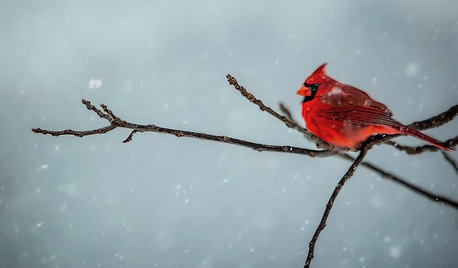
GARDENING GUIDESBackyard Birds: Northern Cardinals in the Snow, and Other Red Birds
Brilliant crimson feathers make these friends stand out in a crowd
Full Story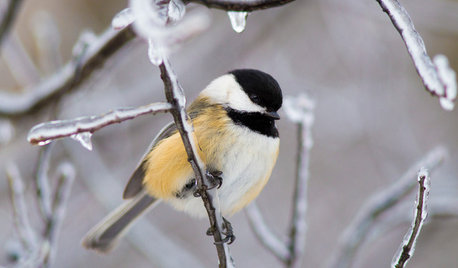
GARDENING FOR BIRDSBackyard Birds: Marvel at Chickadees This Winter
These North American natives flock to bird feeders and entertain with their complex birdcalls
Full Story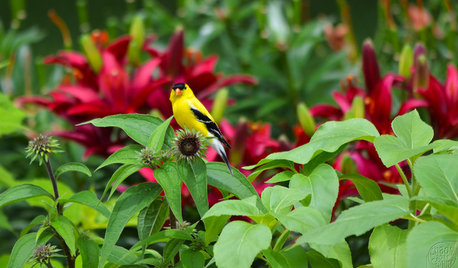
GARDENING GUIDES13 North American Backyard Birds to Know
Find out about these enchanting native species and learn how to attract them to your yard
Full Story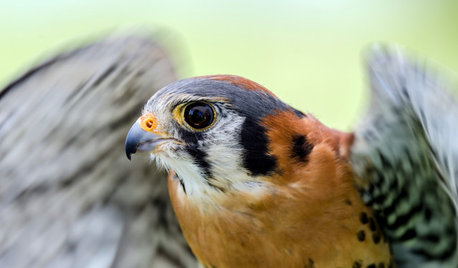
GARDENING GUIDESBackyard Birds: Create a Home for American Kestrels
These copper-colored birds of prey can be found throughout North and South America and often find habitats near human activity
Full Story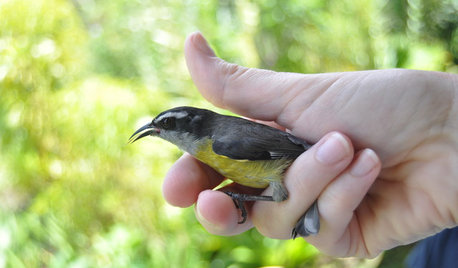
GARDENING FOR BUTTERFLIESBring on the Birds: Natural Habitat Ideas for Gardens of All Sizes
Provide nesting, watering and perching spots inspired by the Costa Rican jungle and watch the birds flock on over
Full Story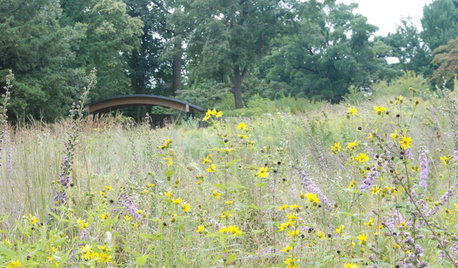
GARDENING GUIDESHow to Find the Right Plants for Your Garden
Break free from choosing plants by cold-hardiness zones for a beautiful landscape that thrives year-round
Full Story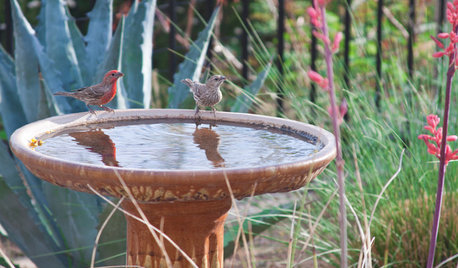
GARDENING GUIDESMake Your Garden a Haven for Backyard Birds
Create a bird-friendly habitat in your yard with food, water and shelter
Full Story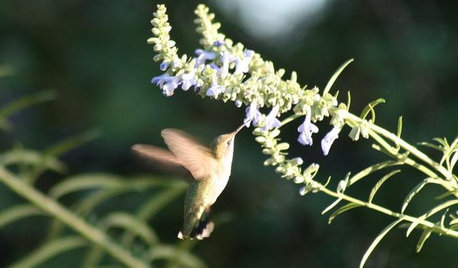
GARDENING FOR BUTTERFLIESA Quick-Start Guide to Bird-Watching for Fun and Learning
Set out some seed and grab your field guide. Bird-watching is an easy, entertaining and educational activity for the whole family
Full Story
GARDENING GUIDESBackyard Birds: Healthy Home Habitats for Northern Flickers
These colorful woodpeckers found across the U.S. and Canada love berries, seeds and ants and often nest in deep burrows in trees
Full Story
GARDENING GUIDESBackyard Birds: How to Care for American Goldfinches
The American goldfinch is a bright-in-the-summer visitor and one of the only vegetarian songbirds. Here's how to give them a healthy habitat
Full StorySponsored



Esther-B, Zone 7aOriginal Author